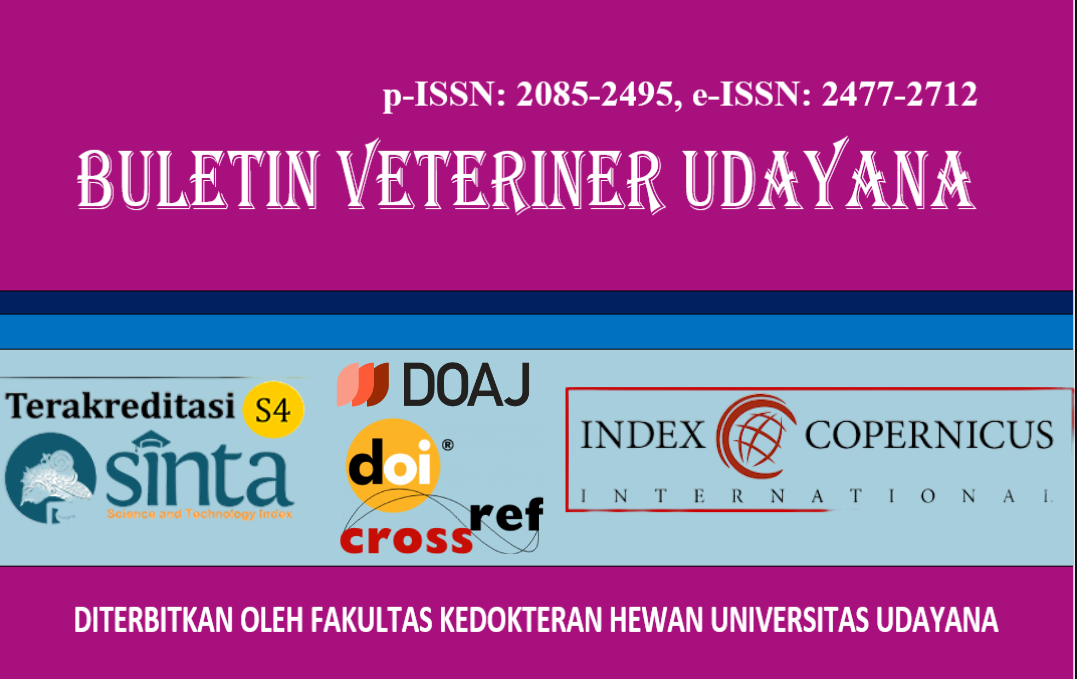COCCIDIOSIS IN BROILER CHICKEN AGED 26 DAYS FROM A FARM IN BANJARANGKAN, KLUNGKUNG, BALI
DOI:
https://doi.org/10.24843/bulvet.2024.v16.i03.p04Keywords:
Coccidiosis, Eimeria spp., Broiler chickenAbstract
The object of this case study is a broiler chicken from a farm located in Banjarangkan District, Klungkung Regency, Bali. This broiler chicken is 26 days old which was reported to have had diarrhea mixed with blood for 5 days. This chicken also experience weakness, pale wattles, and separate itself in the corner of the shed. This case study aims to discuss the anatomical pathology, histopathology, and laboratory examination results to obtain a definitive diagnosis of the disease that attacked this chicken. Data collection in the form of indications, anamnesis, epidemiology, with parasite examination were carried out for further descriptive qualitative analysis. Necropsy after the animal died showed bleeding, and necrosis of the cecum accompanied by enlargement from cecum to colon. Petechiae bleeding were also observed along the small intestine. Histopathological observations showed necrosis in the mucosa of the cecum and small intestine accompanied by bleeding, inflammatory cell infiltration, and clusters of Eimeria spp. with different life stages. Changes also occur in the colon where necrosis of mucosa and proliferation of Lieberkhun crypts were observed. Schizonts of Eimeria spp. were found in qualitative fecal examinations. Based on all data and laboratory examination results of this chicken, it was concluded that the chicken was infected with coccidiosis.




